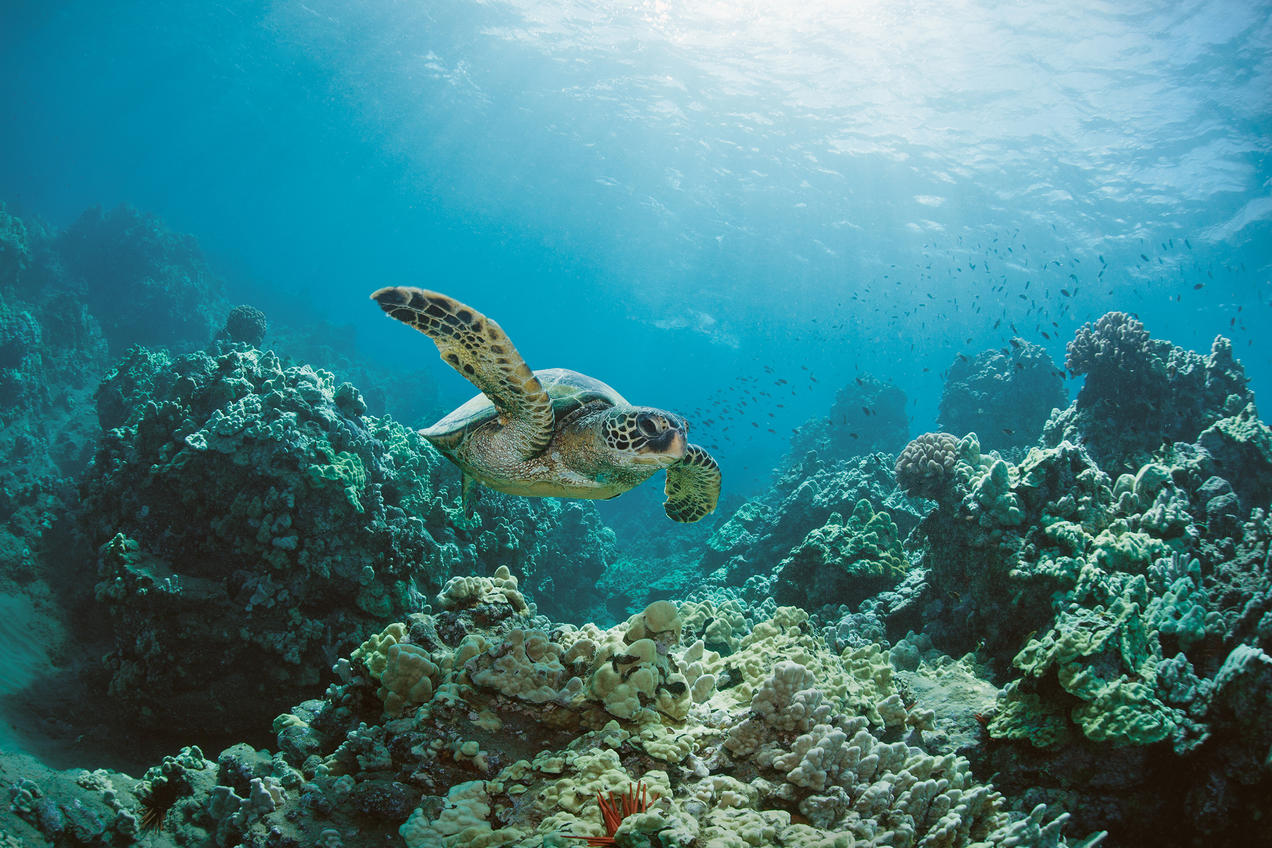Protect & restore the oceans, a source of livelihoods and food for billions of people
Oceans are the primary source of protein for 3.1 billion people in the world, but overfishing threatens oceans to the point where they may not recover [1]. In particular, bottom trawling — towing a net along the ocean floor to capture groundfish or crabs — scrapes an estimated 1.9 M square miles off the sea floor each year. The fishing practice accelerates the warming of surface waters, kills marine life, and accounts for as much carbon emissions as Europe’s largest economy [2].
National Geographic Society’s Pristine Seas program works to restore the health and productivity of the ocean and improve the livelihoods of coastal communities by protecting the ocean from overfishing.
“To be part of this big international crew but telling stories about my home that I can help make sure are told in an accurate and respectful way, that was really special.”
– Ossie Michelin, an Inuk documentary filmmaker who participated in a Pristine Seas expedition to document marine conversation in Indigenous Canadian communities

What it does
Established in 2008, Pristine Seas spearheads a worldwide network of country and business leaders, NGOs, and local governments, all working towards its “30×30” goal: Protecting 30% of the ocean by 2030, the minimum experts say is necessary to prevent an irreversible loss of marine biodiversity and allow fish stocks to recover and serve as a sustainable food source [3].
Pristine Seas works towards that goal by establishing marine protected areas (MPAs), parts of the ocean that are legally protected from overfishing. Pristine Seas uses a combination of advocacy strategies to create MPAs. Pristine Seas publishes films, data, and findings to document marine biodiversity, support preservation projects, and build public awareness of overfishing and support for the protection of ecosystems.
How effective it is
MPAs have been shown to address three main problems brought about by the destruction of marine resources by:
- Protecting biodiversity. Conservation of ocean area protects endangered species and reduces rates of habitat loss, the main threat to biodiversity. No-take marine reserves boast 21% greater species richness, their organisms are 28% larger, and the fish biomass exceeds those of non-protected areas by 600% [4].
- Replenishing fisheries. MPAs serve as nurseries, replenishing fish and crustacean populations that disperse beyond the protected areas into fishing communities.
- Reducing climate change. The banning of bottom trawling in MPAs sequesters carbon dioxide, helping to mitigate climate change and contributing to the protection of coastal communities from severe weather events related to global warming.
Pristine Seas has partnered with 122 different organizations and agencies across 23 countries and territories, contributing to the creation of 26 marine protected areas all over the world These marine protected areas cover 6.5 million square kilometers of ocean, more than twice the size of India. Pristine Seas has undertaken 35 expeditions in some of the least explored and understood places in the ocean around the world, publishing more than 140 scientific papers since 2008.
Globally, the net benefits of protecting 30% of the ocean area are estimated to range from $490B to $920B by 2050, with economic benefits 3 to 10 times the cost of the programs [5].
Pristine Seas has set a goal to establish 50 new marine protected areas by 2030. To reach this goal, the initiative is looking to increase its staff size and develop a program for the long-term implementation of marine reserves.
How you can help
Funding for Pristine Seas comes from the National Geographic Society, individual donors, and private foundations. Providing general operating support allows the organization to direct funds where the money is most needed. For example, $100 could protect 25 square kilometers of ocean, $400,000 could fund a local leadership education program, and $1M could create an entire marine protected area. Learn more at https://www.nationalgeographic.org/projects/pristine-seas/.
More ways to help
Representing all 574 U.S. federally recognized Tribes and Alaska Native Villages, the Intertribal Agriculture Council (IAC) promotes the conservation and development of agricultural resources of American Indian Country, protecting soil, water, air, vegetation, and wildlife that affect the American Indian agricultural community. For more policy and practice on the themes of climate action, stewardship of nature, and human prosperity, see the Penn Environmental Initiative.
Notes
[1] Brander, L. et al. (2015). “The benefits to people of expanding Marine Protected Areas.” Institute for Environmental Studies. https://www.issuelab.org/resources/25951/25951.pdf
[2] Einhorn, C. (2021, March 17). Trawling for Fish May Unleash as Much Carbon as Air Travel, Study Says. The New York Times. https://www.nytimes.com/2021/03/17/climate/climate-change-oceans.html
[3] Ocean Panel. (2022). WRI Ocean Panel – High level panel for a sustainable ocean economy. https://oceanpanel.org/
[4 Welch, C. (2022, April 28). “Mass extinction in oceans can be avoided by curbing fossil fuels.” Environment. National Geographic. https://www.nationalgeographic.com/environment/article/mass-extinction-in-oceans-can-be-avoided-by-curbing-fossil-fuels,
[5] Brander, L. (2015).
